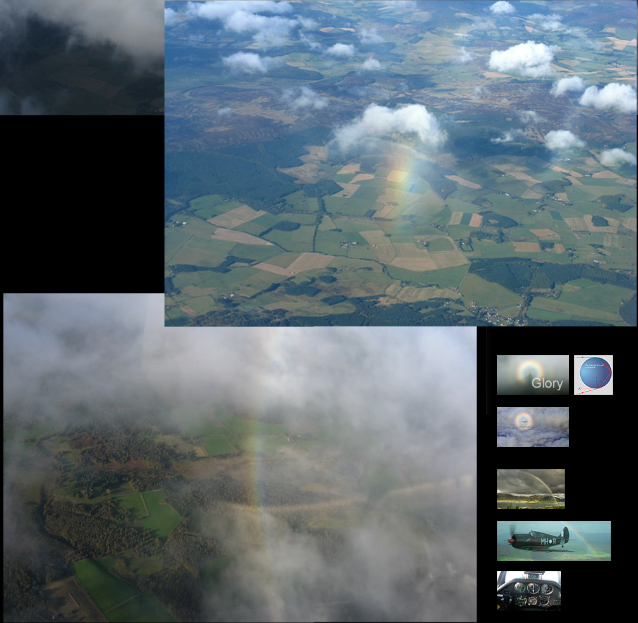Glider Optics
Glider Optics: Exploring the Phenomena of Light in the Sky
When soaring through the skies on a glider, there is more to behold than just the breathtaking views below. The interaction of sunlight with atmospheric particles and water droplets can create a fascinating display of optical phenomena known as glider optics. These captivating sights include glories, shadows, and even fragments of rainbows that can be observed from the cockpit. In this article, we will delve into the world of glider optics, uncovering the science behind these mesmerizing phenomena.
Glories: A Halo of Colors
One of the most enchanting sights in glider optics is the formation of glories. Glories appear as concentric rings of colors surrounding the shadow of the glider on clouds or mist. They are formed through a combination of diffraction and backscattering of sunlight by tiny water droplets present in the cloud. As light enters the droplets, it undergoes diffraction, bending and spreading out into a circular pattern. This diffracted light then reflects back towards the observer, creating the colorful rings of a glory.
Shadows in the Sky
Accompanying the glory is the shadow of the glider at the center. The shadow appears as a dark spot amidst the vibrant rings of a glory. It serves as a reminder of the presence of the glider itself, casting its mark on the cloud or mist below. The sharpness and clarity of the shadow can vary depending on factors such as the size and density of the water droplets.
Rainbow Fragments: A Glimpse of Color
Another spectacle that can be witnessed during a glider flight is the sighting of rainbow fragments. These fragments occur when there is a gap or hole in the cloud deck, allowing sunlight to pass through and interact with raindrops suspended in the air. As sunlight enters the raindrop, it undergoes refraction, bending and dispersing into its constituent colors. This dispersion creates a small section of a rainbow, visible as a colorful fragment against the backdrop of the sky.
Understanding the Science
To truly appreciate glider optics, it is important to understand the underlying scientific principles at play. The interaction of light with atmospheric particles and water droplets gives rise to these optical phenomena. Diffraction, the bending and spreading of light waves, is responsible for the formation of glories. Backscattering, where light is redirected back towards the observer, contributes to the vibrant rings of colors within a glory. Refraction, the bending of light as it passes through different mediums, plays a role in the creation of rainbow fragments.
The Role of Atmospheric Conditions
The occurrence and visibility of glider optics are heavily influenced by atmospheric conditions. The presence of clouds or mist containing water droplets is essential for glories to form. The size and concentration of these droplets affect the intensity and clarity of the phenomena. Similarly, the presence of raindrops and gaps in the cloud deck determine the visibility of rainbow fragments. Therefore, the optimal conditions for observing glider optics involve a combination of clouds, mist, and gaps in the cloud cover.
Capturing Glider Optics
Glider pilots and enthusiasts often have the privilege of witnessing these captivating optical phenomena firsthand. To capture these moments, some pilots equip their gliders with cameras to document the glories, shadows, and rainbow fragments they encounter during their flights. The resulting images not only serve as stunning visual records but also contribute to our understanding and appreciation of glider optics.
A Window into Atmospheric Optics
Glider optics provide us with a unique window into the world of atmospheric optics. By observing and studying these phenomena, we gain insights into the behavior of light in our atmosphere. The interaction between sunlight and atmospheric particles allows us to witness the beauty and complexity of optical phenomena in the sky. Glider optics serve as a reminder of the intricate interplay between light and the natural world, captivating our imagination and deepening our understanding of the phenomena that surround us.
In conclusion, glider optics offer a captivating display of optical phenomena that can be observed during glider flights. Glories, shadows, and rainbow fragments provide a glimpse into the interaction of sunlight with atmospheric particles and water droplets. Understanding the scientific principles behind these phenomena enhances our appreciation for the beauty and complexity of the natural world. So, the next time you find yourself soaring through the skies on a glider, take a moment to look up and marvel at the wonders of glider optics.

Glider Optics ~ Captured by Mike Rubin (more images) October '09 on a wave flight over Deeside, Aberdeenshire, Scotland. Images ©Mike Rubin, shown with permission.
Left: The outer droplets of a gloud diffract and backscatter sunlight to form a glory. At its center is the glider's shadow.
Below: A gap in the cloud deck reveals a rainbow fragment.


Note: this article has been automatically converted from the old site and may not appear as intended. You can find the original article here.
Reference Atmospheric Optics
If you use any of the definitions, information, or data presented on Atmospheric Optics, please copy the link or reference below to properly credit us as the reference source. Thank you!
-
<a href="https://atoptics.co.uk/blog/glider-optics/">Glider Optics</a>
-
"Glider Optics". Atmospheric Optics. Accessed on November 26, 2024. https://atoptics.co.uk/blog/glider-optics/.
-
"Glider Optics". Atmospheric Optics, https://atoptics.co.uk/blog/glider-optics/. Accessed 26 November, 2024
-
Glider Optics. Atmospheric Optics. Retrieved from https://atoptics.co.uk/blog/glider-optics/.